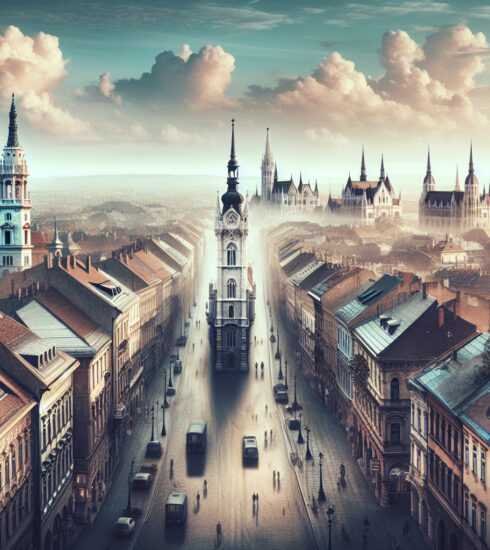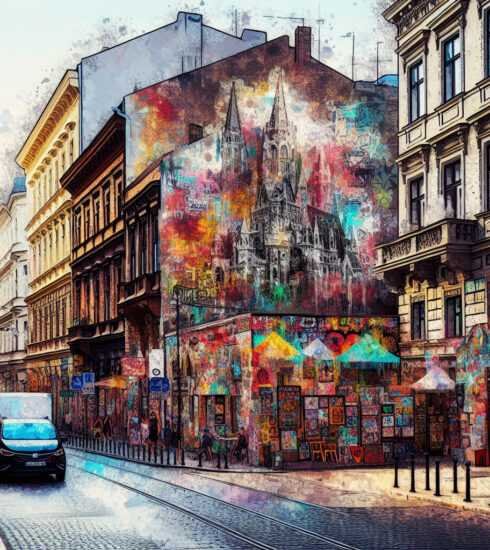Unlocking the Architectural Splendors of Hungarian Cityscapes: A Fascinating Article to Unveil Whispers of Elegance
Introduction
Hungary, known for its rich history, vibrant culture, and breathtaking landscapes, is also a haven for architectural enthusiasts. From grand palaces to intricate churches, the country’s cityscapes are adorned with stunning architectural marvels that reflect its diverse heritage and artistic prowess. In this article, we will delve into the world of Hungarian architecture, uncovering the whispers of elegance that resonate in the cityscapes and exploring the unique architectural splendors that make Hungary stand out.
The Magnificent Architecture of Budapest
Buda Castle
The Buda Castle, the crown jewel of Hungarian architecture, is a UNESCO World Heritage Site that sits atop Castle Hill, offering panoramic views of the Danube River and the Pest side of Budapest. Built in the 13th century, the castle has undergone various renovations and additions over the centuries, resulting in a blend of architectural styles ranging from medieval to baroque. The elegant facade, adorned with ornate sculptures and intricate detailing, is a testament to the grandeur of the Hungarian monarchy.
Parliament Building
The Hungarian Parliament Building, one of the most iconic landmarks in Budapest, is a masterpiece of Gothic Revival architecture. With its towering spires, arches, and intricate decorative elements, the building is a true architectural gem. Designed by architect Imre Steindl and completed in 1904, the parliament building is not only a symbol of political power but also a showcase of Hungarian craftsmanship.

St. Stephen’s Basilica
St. Stephen’s Basilica, named after the first King of Hungary, is a stunning example of neoclassical architecture. The grandeur of the basilica is amplified by its towering dome, which rises nearly 100 meters above ground level. The interior is equally impressive, featuring beautifully crafted statues, intricate mosaics, and an ornate main altar. Visitors can also admire breathtaking views of Budapest from the dome’s observation deck.
The Architectural Gems of Debrecen
Great Reformed Church
The Great Reformed Church, located in the heart of Debrecen, is a celebrated example of Hungarian Protestant architecture. Built between 1805 and 1824, the church’s neoclassical design is characterized by its symmetrical facade, grand columns, and dome-shaped bell tower. The interior boasts stunning frescoes, intricate woodwork, and a magnificent organ, making it a must-visit for architecture and history enthusiasts.
Ferenc Medgyessy Memorial Museum
The Ferenc Medgyessy Memorial Museum is an architectural masterpiece that showcases the unique blend of Art Nouveau and Hungarian folk elements. Designed by renowned architect Lajos Kozma, the museum exhibits the life and work of Ferenc Medgyessy, a prominent Hungarian painter. The building’s exterior features intricate decorative motifs and intricate ironwork, while the interior houses Medgyessy’s artworks and personal belongings.
The Architectural Marvels of Pécs

Pécs Cathedral
Pécs Cathedral, also known as Székesegyház Basilica, is a striking example of Hungarian Romanesque architecture. The cathedral’s imposing facade, with its intricate stone carvings and ornamental details, is a sight to behold. Inside, visitors can admire beautiful stained glass windows, grand columns, and a majestic organ that fills the cathedral with enchanting melodies.
Zsolnay Cultural Quarter
The Zsolnay Cultural Quarter in Pécs is a testament to the revitalization of industrial heritage and its integration into contemporary architecture. The quarter, located in the former Zsolnay porcelain factory complex, showcases a harmonious fusion of historic and modern architectural styles. The colorful rooftops, ornamental details, and unique ceramic decorations give the complex a distinct identity.
Conclusion
Hungarian architecture is a tapestry of diverse styles, reflecting the country’s rich history and cultural influences. From grand castles to intricate churches, the architectural splendors of Hungary’s cityscapes are a testament to the country’s artistic prowess and architectural heritage. Whether exploring the magnificent buildings of Budapest, the architectural gems of Debrecen, or the marvels of Pécs, visitors are sure to be captivated by the whispers of elegance that resonate through Hungary’s architectural landscapes.
Hungarian architecture embodies the spirit and culture of the country, and its splendors continue to captivate visitors from around the world. As you wander through the streets of Hungary’s cities, take a moment to appreciate the architectural masterpieces that stand as testaments to the country’s rich heritage.
For more information on Hungarian architecture and other wonders of the country, check out the article “Hungarian Time Capsules” available at Hungary Trip. Additionally, the article “Hungarian Wonders” offers insights into various attractions and architectural marvels found throughout Hungary. Happy exploring!





